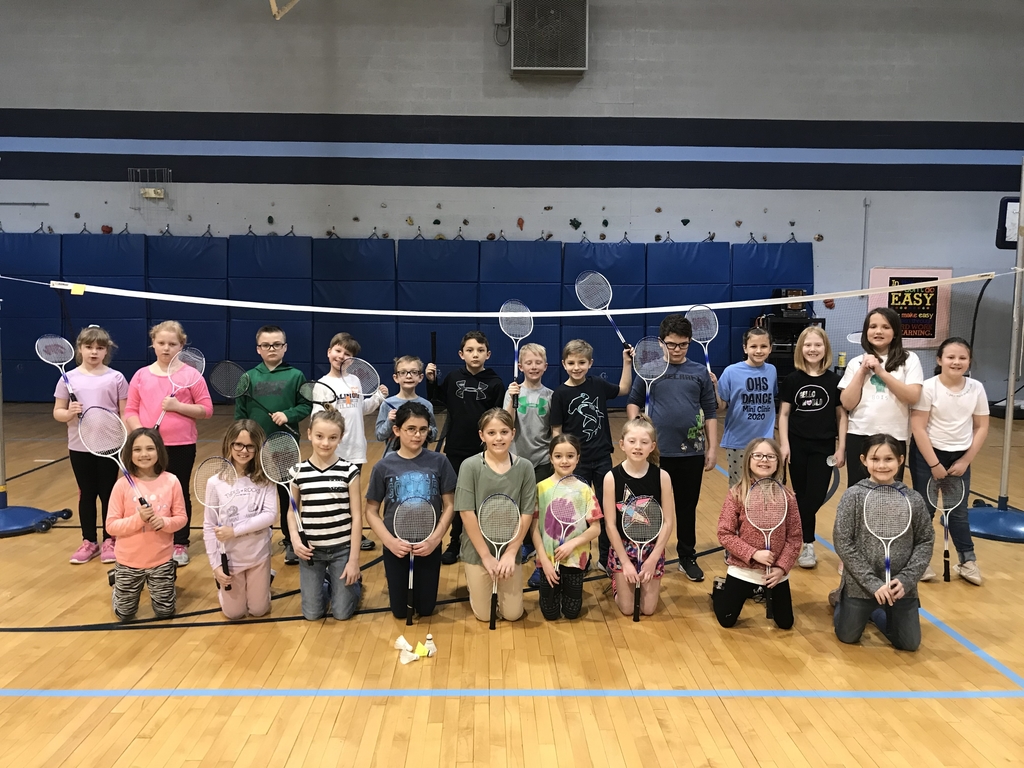Learn more about how to use PBIS at home. Here's a video showing how to set and reinforce expectations!
https://youtu.be/aNxVyHNA6XA
2020 Olympia West Annual Badminton Tourney

Fourth grade played main idea Jenga today.


The votes are in for the final 4 of the Tournament of Books. Which book will make it to the Championship?

ACTIVITY UPDATE: Our annual Mr Spartan event scheduled for tonight Friday March 13th has been postponed to a date yet to be determined.

Your community is counting on you. Watch your mailbox and complete your household’s census at CareAbouttheCount.org. #CareAbouttheCount #CentralIllinoisCounts

Badminton in full swing this week



Congratulations to these Spectacular Spartans!

Day 3 results of The Tournament of Books are in. 4th and 5th grade students voted for The Day the Crayons Quit and Boy.

March Madness Tournament of Books started today at Olympia West. 4th and 5th grade students are reading and voting on their favorite book in the bracket. Which book will become the champion?

Family Tip 5: Review worst-case steps.
Walk through what to do if your kid is being bullied online. First, step away. Ignoring a bully can be very effective. If the bullying continues, take screenshots or print out evidence. Then block the person. If it gets worse, report the behavior to a trusted adult. Talk about who those people are and make sure your kid has their contact information.

Resources: bit.ly/OlyCBR1
There are A LOT of "social media" sites out there. You know about Twitter & Facebook, but what about Reddit, TikTok, Twitch, Sarahah, or Discord? Educate yourself with this list of short explanation videos from Common Sense media!

Video: bit.ly/OlyCBV4
For kids, miscommunication is a common occurrence online and on social media. Plus, being behind a screen makes it easier to say things they wouldn't say in person. So how do we help kids avoid the pitfalls of digital drama?Hear it from the source!

Do you need to get out of the house during these winter months? Check out the 5th grade basket “Family Night Out” during the live auction tonight.

Who loves music? Don’t miss the 4th grade basket “One-of-a-Kind” featuring Apple AirPods Pro tonight during the live auction.

Pizza! Pizza! Pizza! Check out the “Pizza Basket” by 3rd grade classes tonight at the live auction.

Calling all crafters. . . 2nd grade classes sponsored a Cricut Explore Air 2 and supplies. Don’t miss the auction tonight at 6:30.

Anyone love coffee? If so, look for the “Coffee Lovers” basket by 1st grade classes during the live auction tonight at 6:30.

“Dining Out” basket by Kindergarten classes will be on the live auction at 6:30.

Check out the art supplies basket put together by the PreK classes. This will be on the live auction starting at 6:30.

